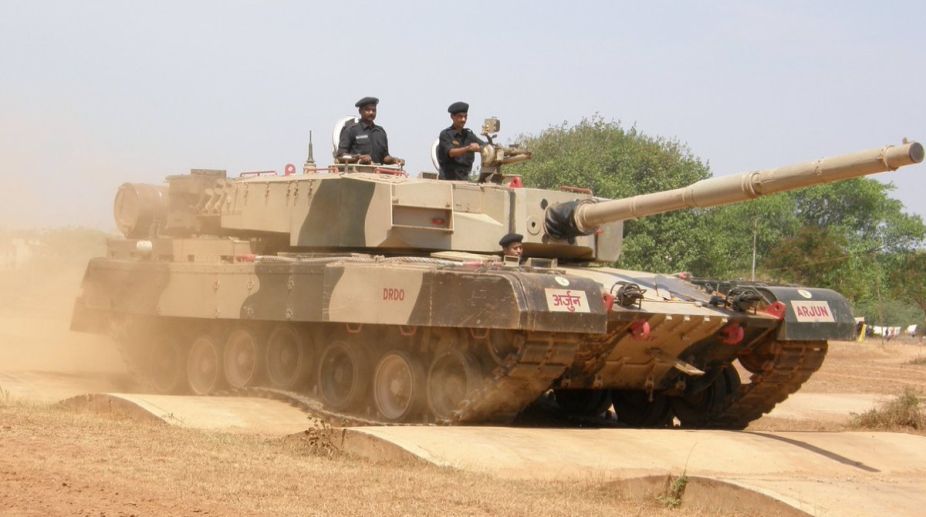Two students among six killed in Srinagar boat mishap
At least six people, including two school children, were killed early morning on Tuesday when a boat ferrying them on the river Jhelum capsized in the outskirts of Srinagar.

Arjun MBT (Photo: Twitter)
The soldier would be relieved that the government is close to finalising a Rs 40,000-crore plan to procure long overdue small-arms ~ rifles, carbines and light machine-guns ~ for the generally unheralded footslogger.
Much of the time the glare of publicity over combat aircraft, warships and missiles has blinded the common folk to a grim reality that was explained thus by a former Director-General of Infantry ~ “the Indian soldier is the world’s best, but is worst equipped”, and he estimated that casualties could be reduced by 50 per cent if the men had better weaponry.
That observation must be seen in the context that apart from the localised action in Kargil the Army has not “gone to war” since 1971, so its equipment-deficit has to be gauged against what terrorists (state sponsored or otherwise) are now using.
Advertisement
That the plans include acquiring 770,000 rifles speaks volumes for the “dud” that was the much-touted INSAS (Indian small-arms system) that entered service during the Kargil conflict ~ it has outlived its utility in just 25 years or thereabouts. As much of a “no-show” as the Arjun MBT and the Tejas LCA. The procurement plan actually translates into a grim test for the state-run Ordnance Factory Board.
If it does not garner, on merit, a substantial share of the huge orders that will be placed it could spell doom for many of its 40-odd units, including the once-famous rifle factory at Ichapore.
Since foreign manufacturers are likely to be the OEM (ordinal equipment manufacturers) but the “make in India” drive will also come into play, the OFB should make determined efforts to have its units selected as the indigenous partner in the joint-production exercise. It is true that in terms of physical infrastructure and experience the Ordnance factories have a head-start in small-arms production, but the foreign principal could have reservations over their work-culture and efficiency.
Those manufacturers have global reputations to protect and might prefer to choose a private sector partner ~ restrictions on them have just been waived ~ to keep that reputation intact (the experience of aircraft producers Hawker-Siddeley, Dornier and MiG in licensed production of their transports and fighters, respectively, was not very encouraging). The OFB should not stand on false prestige and opt to play second-fiddle ~ profitably.
That would put “make in India” in the defence sector into the correct framework. To do that, however, the OFBs units will need to abandon their sarkari mindset. It was all very well to laud them in an era when they had a monopoly in production as well as a captive market.
Things have changed dramatically since the economy liberalised and major firms have now entered defence production. The OFB has to acquire a competitive, efficient outlook. Should it fail to carve its own niche in the upcoming procurement plans it could face “curtains”.
Advertisement